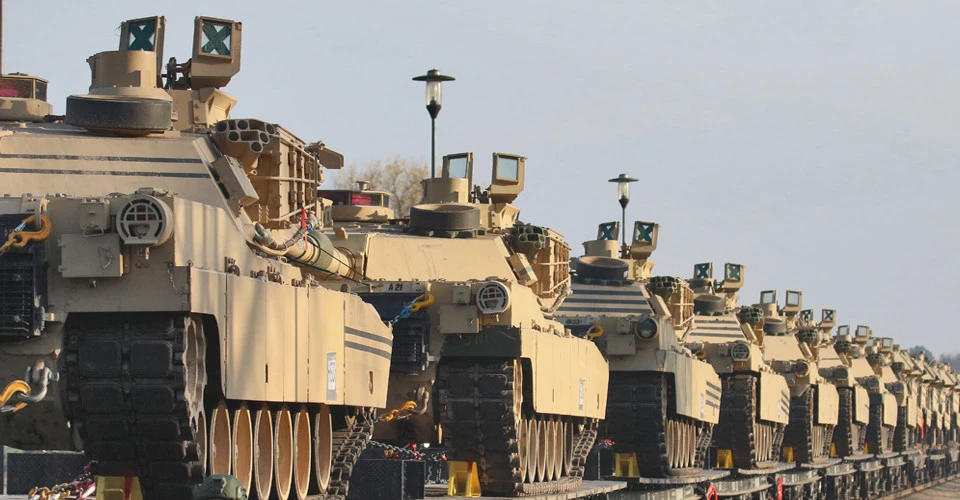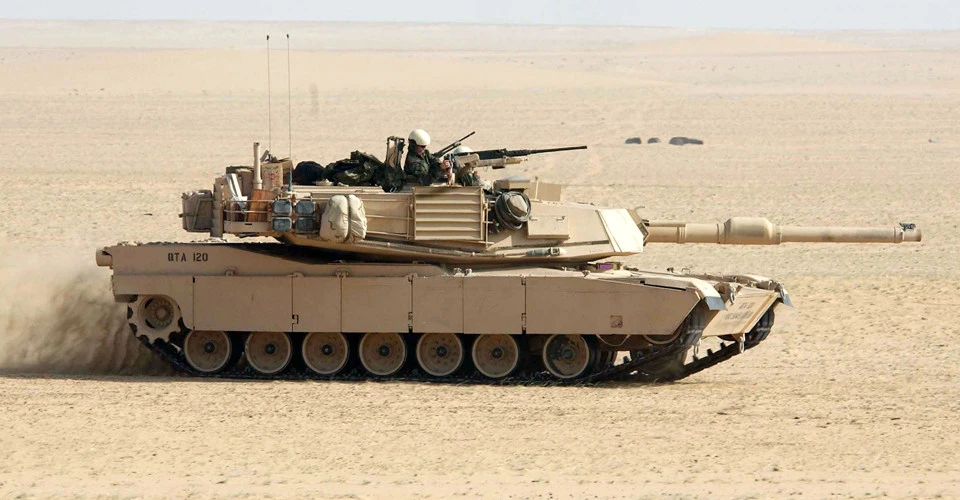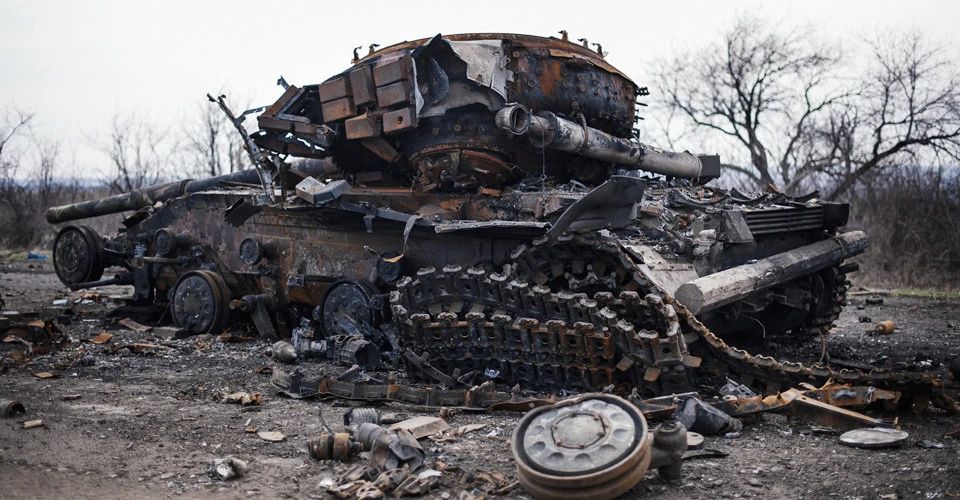
How Abrams will affect combat operations in Ukraine: advantages and technical characteristics of American tanks
The first batch of Abrams tanks has been approved for shipment from the US to Ukraine. This means that in the fall, the Ukrainian Armed Forces will fight against the invaders with tanks that are often called the best in the world
Espreso delves into the intricacies of Abrams tanks, their features, technical characteristics, and the ways in which they outperform their Russian counterparts.
Supply of Abrams to Ukraine
As early as January 19, 2023, the Pentagon stated that the US was not yet ready to provide Ukraine with Abrams tanks. But obviously, it was a publicity stunt. Less than two weeks later, Joe Biden officially announced that Ukraine would receive 31 Abrams.
"And today — today, I’m announcing that the United States will be sending 31 Abram tanks to Ukraine. It will enhance the Ukraine’s capacity to defend its territory and achieve its strategic objectives. The Abrams tanks are the most capable tanks in the world. They’re also extremely complex to operate and maintain, so we’re also giving Ukraine the parts and equipment necessary to effectively sustain these tanks on the battlefield. We’ll begin to train the Ukrainian troops on these issues of sustainment, logistics, and maintenance as soon as possible," said US President Joe Biden.
This step by the United States had another positive effect for Ukraine - it pushed Germany to provide Leopard tanks to Kyiv. The Leopards are already successfully operating at the front, while the Abrams are just being prepared for shipment.

Photo: gettyimages
Initially, the intention was to provide Ukraine one of the best modifications of the Abrams tank, the M1A2. However, they are assembled in only one place - at the General Dynamics plant in Ohio. This plant can produce 12 tanks per month, but it currently has many orders for tanks for Taiwan and Poland. Consequently, in March, it was revealed that the Pentagon would supply Ukraine with earlier versions of Abrams tanks, which would speed up their transfer and make it possible for the tanks to arrive in Ukraine in the fall.
According to Pentagon spokesman General Patrick Ryder, the models are "very similar in terms of capabilities," including a 50-caliber heavy machine gun and a 120-mm cannon. Valeriy Ryabykh, Development Director of Defense Express, an information and consulting company, shares the same opinion.
"In the US, these two versions of tanks exist in parallel, they are being modernized in parallel, and the A1 designation does not mean that it is an old tank. They have been modernized, equipped with modern control systems, enemy detection and guidance, including night channels. In general, this is one of the modern versions that will become an additional trump card in the hands of the Ukrainian Armed Forces in the complete liberation of Ukrainian territories during a counteroffensive operation. This decision will accelerate the supply of such a desirable means to continue to destroy the occupiers on our land," the military expert told Espreso.
In May, the first group of 400 Ukrainian soldiers began training on American Abrams tanks in Germany. On August 7, the first batch of Abrams tanks provided by the United States to Ukraine was approved for shipment. The tanks are to arrive in Ukraine in early fall.
"Now they have to get to Europe, and then to Ukraine, along with all of the things that go with them. Ammunition, spare parts, fuel equipment, repair facilities. So you know, it's not just the tanks, it's the full package that goes with it," said Doug Bush, chief of the US Army's acquisition office.
Abrams: the main US tank
The Abrams is a 3rd generation main battle tank manufactured in the United States. It is named in honor of General Creighton Abrams, the commander of the US armed forces in Vietnam in 1968-72.
The Abrams has been in service with the US Army since 1980, but is still used by the Americans in all military operations, undergoing constant modernization. The US plans to extend the service life of the tank until 2050.
The M1 Abrams is one of the heaviest tanks of our time, with a combat weight of over 60 tons. The tank is designed for a crew of four people: a commander, a gunner, a loader, and a driver. This tank is the first to use a computerized fire control system.
The tank is equipped with a 120 mm smoothbore gun with a 40-round ammunition capacity. The effective range of the gun with standard ammunition is 3 km. The ArmyInform article emphasized that the range of the Abrams is comparable to the capabilities of the much-hyped and repeatedly destroyed in Ukraine T-90M Proryv. While the corresponding figure for the T-72B3 and T-80 tanks is worse (1.5-2.2 km.) Abrams also has a sub-caliber M829 ammunition capable of penetrating at least 700 mm of armor at a distance of 2 km.
On the M1A1, an improved laser rangefinder and thermal imaging camera are built into the gunner's main sight, and the sight is stabilized in two planes. The rangefinder is capable of accurately calculating ranges from 200 to 7,990 meters, which is about 4 km for ballistic decision-making. The tank commander has a remote-controlled combat module that allows him to fire a large-caliber machine gun while on the move. The tank has a digital command and control system called Blue Force Tracking (it recognizes "friend or foe").

Photo: gettyimages
The large weight does not prevent the tank from reaching a speed of 72 km/h on the highway and 48 km/h off-road.
The tank is covered with composite armor made of steel, ceramic and Kevlar, and can be additionally covered with protection over the chassis, stern and fuel tanks. Starting in 1987, M1A1 tanks received improved armor packages composed of depleted uranium. Depleted uranium was also used in the A2 versions during the modernization. However, the United States keeps these technologies strictly secret, so the tanks receive different armor for export.
Since 2021, all Abrams have been equipped with the Israeli Trophy APS active protection system, which protects the tank from anti-tank guided and unguided missiles. The system creates a protective controlled hemisphere over the tank, tracking potential threats and destroying missiles fired at the vehicle with a directed explosion on approach.
Among the disadvantages of the Abrams is its high fuel consumption. The tank is powered by a gas turbine engine and has a six-speed automatic transmission. It takes 38 liters of fuel to run the turbine alone. Such requests can create logistical problems for the military. In the Middle East, the Americans sometimes did not advance quickly enough because the tanks needed frequent refueling, which was done by special vehicles.
Technical characteristics of the Abrams M1A2
-
Combat weight: 61,3 tons.
-
Length with gun: 9,83 м.
-
Width: 3,65 м.
-
Height: 2,89 м.
-
Crew: 4 persons
-
Armor: multilayer anti-surface composite
-
Main armament: 120 mm smoothbore M256
-
Secondary armament: 1×12.7 mm M2HB heavy machine gun or 2×7.62 mm M240 machine guns (1 turreted, 1 twin)
-
Ammunition: 40 rounds (including 17 first rounds) / 900 rounds (12.7 mm) / 11,400 rounds (7.62 mm)
-
Engine: 1,500 hp.
-
Fuel tank capacity: 1,900 liters
-
Power reserve: 465 km.
In terms of overcoming obstacles, the Abrams M1A2 can overcome a 2.75-meter deep ditch, cross a 1.2-meter ford, or overcome a vertical obstacle of similar height.
Abrams vs. T-72
Abrams are extremely effective against Russian tanks. Despite the fact that Russian propagandists extol the virtues of the "no analogs" weapon over Western models, even Russian military analysts recognize the superiority of the Abrams. Voice of America quotes Ruslan Pukhov, director of a Russian think tank, as saying, "Abrams tanks are the best tanks in the world in terms of combat potential, surpassing the Russian T-90 tanks, which are the newest and most advanced version of the T-72."
The Abrams tank was designed specifically to counter the Soviet T-72. American tanks have a more advanced fire control system. It allows for faster target detection and a better chance of hitting the target from the first shot. Thanks to its more powerful engine, the Abrams has better acceleration and maneuverability than the T-72. Russian tanks also have worse optics and night vision systems. Even in terms of comfort, the Abrams has an advantage due to its larger combat compartment, which provides more space.
One of the major drawbacks of the T-72 tanks is its design, according to the Washington Post. The shells are placed in a circle inside the tank's turret. Therefore, when an enemy shot hits the tank, there is a high probability of a chain reaction - the ammunition detonates and flies out of the tower, killing everyone inside. The force of such a detonation can "instantly vaporize" the crew of a T-72 tank, said Robert Hamilton, a professor at the US Army War College.
A good illustration with diagrams of the placement of troops and shells in T-72s, Abrams and Leopards:

Photo: gettyimages
"Looking at the weight, speed, armored protection, sighting technology and accuracy, to name just a few, the M1 Abrams outclasses the T-72 variants," said Michael Clark, a professor of the War Studies department at King's College London.
Ultimately, the superiority of the Abrams over the T-72 is proved not only by theory, but also by practice. During the 1991 Gulf War, the Battle of Medina Ridge took place, during which an American brigade of Abrams tanks destroyed an Iraqi brigade of T-72s in less than an hour. Due to their longer range, Abrams tanks were able to hit Iraqi tanks before the enemy approached a threatening distance.
During this battle, Iraq suffered significant losses: 186 tanks, 127 armored personnel carriers, 72 artillery pieces, 118 trucks and 5 air defense systems were destroyed. The Americans, on the other hand, lost only 2 helicopters, 4 tanks, and 2 armored personnel carriers.
How Abrams tanks will affect the war in Ukraine
M1 Abrams tanks will have an advantage over Russian tanks in counter-tank battles, according to military analysts. And the Chairman of the Joint Chiefs of Staff, General Mark Milley, said that the Abrams tanks that Ukraine will receive will dramatically change the situation at the front.
"So on the M1 tank, you know, I'm biased, but I think the M1 tank's the best tank in the world. But I do think the M1 tank, when it is delivered, will make a difference," said General Milley.
The provision of a batch of American tanks to Ukraine marks another strategic move in bolstering defenses against the Russian invaders. This significant step will be succeeded by subsequent actions, as underscored by Serhiy Zgurets, CEO of Defense Express.
"Abrams tanks should be seen as the first step to ensure a long-term supply. Abrams are different compared to Leopard. They require much more fuel, support, and are heavy. The first 30 Abrams tanks should provide logistics for the Ukrainian Armed Forces, and then it will be possible to increase the number of tanks, which the Americans have enough of. The delivery of Abrams is a general trend of the US commitment to its promises," Zgurets emphasized.
The same stance resonates in Washington. Pentagon spokesperson Sabrina Singh stated in the winter that the United States would continue supplying Abrams tanks to Ukraine until Putin ends the war.
"This work could go on till the end of the year, it could go on for many years. And so, by giving these Abrams through the USAI package, that shows a long-term commitment to Ukraine. And, I think, really sends a message that our allies and partners are united in our support for Ukraine," Singh said.
Military analysts are unable to accurately predict the exact quantity of Abrams tanks that Ukraine might ultimately receive. Notably, Poland, for instance, has secured an order for 250 M1A2 tanks. The comprehensive contract, covering associated services and ammunition, tallies up to USD 4.75 billion (USD 19 million per tank). These tanks are scheduled for delivery to Warsaw by the close of 2025. In tandem with the American agreement, Poland also inked a deal with South Korea for 180 K2 tanks. Presently, Poland boasts 245 Leopard tanks in its arsenal. Consequently, by 2025, Poland's modern tank count will reach 800. This comprehensive arms enhancement carries a price tag of USD 8.1 billion for Warsaw.
The experts at Defense Express highlight a crucial point: even if Ukraine manages to secure Abrams tanks at a cost half as affordable as Poland's, acquiring a batch of, for instance, 300 tanks (as indicated by Zaluzhnyi in his interview) would consume a substantial portion of the allocated military aid funds. Concurrently, the Ukrainian Armed Forces, as per the commander-in-chief's assessment, require an additional 700 infantry fighting vehicles, 500 howitzers, and reinforced air defense capabilities along with fighter aircraft.
- News













































